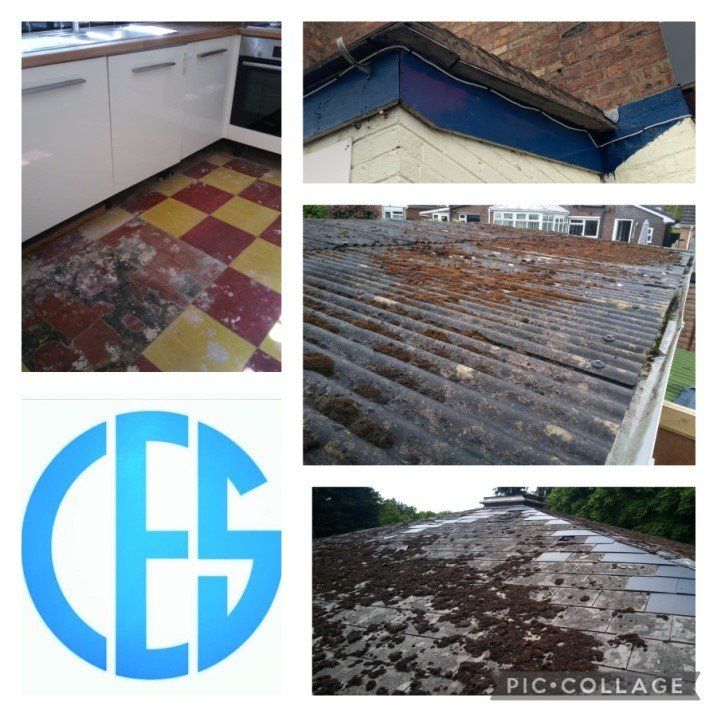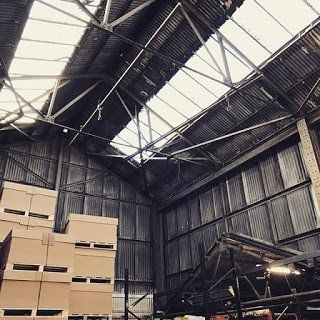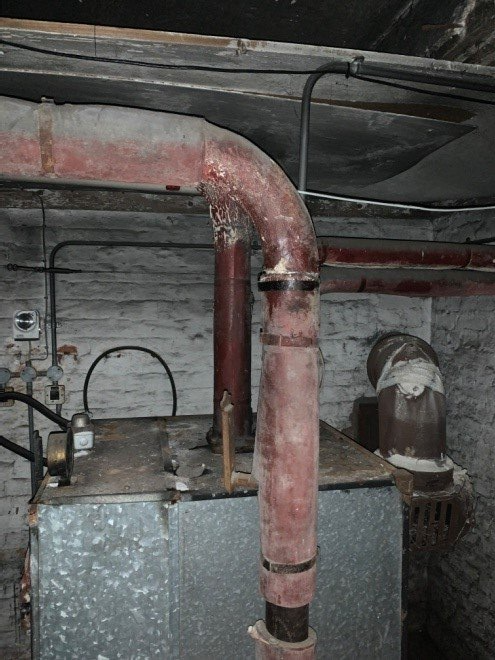Blogs

There is often a lot of confusion for people who are not in the Asbestos industry as to what the difference is between Licensed (Notifiable) and non licensed (Non Notifiable) asbestos removal. We find this can very often lead to stress and confusion when trying to gain quotes for Asbestos removal. There are still many Grey areas within the Asbestos industry, therefore making it almost impossible to write the exact difference between Licensed (Notifiable) and non licensed (Non Notifiable) materials in a small blog post. We can however discuss the basics that need to be known by all and hopefully this will help you to gain better knowledge and understanding in Asbestos Removal. The damage/ deterioration and quantity of the material plays a massive part as to how the material should be removed, but the general rule is that if the material is non fibrous and bounded, such as Cement, vinyl, Bitumen etc it is treated as non licensed (Non Notifiable) removal (Providing its in good condition). Non licensed materials almost always contain the Chrysotile fibre and sometimes crocidolite. Some Examples of these non-licensed (Non notifiable) materials are – Asbestos Cement Roof Sheets, Asbestos Vinyl Floor Tiles, Asbestos Ceiling panels, Asbestos Bakelite Toilet Cistern, Asbestos Cement undercloaks and Asbestos Roof Slates. You then have materials that should be removed by Licensed Asbestos Removal Contractors; These types of removals require a 14 day notification to the HSE, Enclosures to be built around the material that is being removed, Fibre suppression, Decontamination units for the operatives to shower, Negative pressure units and much more. This material is often more fibrous then non licensed materials and requires minimal disturbance to realise fibres. Materials such as Garage ceilings (Board), Soffit Boards and Undercloaks often require a sample to be taken prior to removal to determine the type of material that is present. These types of materials almost always contain the Amosite Fibre, also Chrysotile or Crocidolite. You sometimes even have all 3 fibres mixed within the one material. For example: A Garage ceilings can either be Asbestos Cement or Asbestos Insulation Board, these two materials can easily be mistaken for one another by an untrained eye and sometimes even by professionals. By sampling these materials, the lab can determine the type of material and avoid Asbestos being wrongly removed and disposed of. Some examples of Asbestos that should be removed under Licensed (Notifiable) conditions are – Asbestos Insulation Board Soffits, Asbestos Insulation Board to Garage/other Ceilings, Asbestos Pipe Insulation (Also known to some as Pipe Lagging), and Asbestos Insulation board to Airing cupboards. There are many more Asbestos materials that have not been spoken about in this post and it is always highly recommended that you instruct an Asbestos Surveyor prior to any Refurbishment/ Demolition works to help identify any Asbestos that may be present. Please find some photos below of Asbestos materials that should be removed under licensed (Notifiable) conditions and also an example of an enclosure that would be built for licensed removal of a Garage Ceiling -

Asbestos Related Illnesses There are several different types of Asbestos related illnesses that can be caused from exposure to Asbestos fibres, some of these illnesses being - · Asbestosis – Where the lung tissue becomes scarred. · Lung cancer. · Mesothelioma, which is cancer of the tissue around the lungs. · Pleural effusion, a type of pleurisy – This is inflammation to the sheet like layers that cover the lungs. · Pleural plaques, which are hard structures around the lungs and diaphragm. Who can be exposed to Asbestos fibres? The easy answer to this question is that anyone can be exposed to asbestos fibres however some people are more likely to be exposed then others. If you are a contractor (On the Tools) and work in older Buildings that were built or refurbished around the 1960’s- 1990’s then you are more likely to be exposed. More about Mesothelioma: Mesothelioma is a malignant tumour that is caused by exposure to asbestos fibres and forms in the lining of the lungs, abdomen or heart. Some symptoms of Mesothelioma can include shortness of breath and chest pain. More then 2,600 people are diagnosed with Mesothelioma each year in the UK, The majority of them being Men aged between 60 to 80 Years old. Unfortunately, it's rarely possible to cure Mesothelioma, although treatment can help control the symptoms and research is continually evolving. A link attached, showing new developments in Asbestos related Illness – https://www.dailymail.co.uk/health/article-10147525/Life-extending-drug-sufferers-asbestos-lung-disease-finally-available-NHS.html Asbestosis: Asbestosis is a lung condition caused by long-term exposure to asbestos fibres. When asbestos fibres are inhaled they enter the lungs and can gradually damage them over time by leaving scarring. Some of the symptoms include: · Shortness of Breathe · Persistent Cough · Wheezing · Tiredness/ Fatigue · Pain in the chest and or shoulders Some helpful foundations/ charities below, for further advice and/ or support: · British Lung Foundation – helpline 03000 030 555 · Cancer Research UK: Mesothelioma – Helpline 0808 800 4040 · Mesothelioma UK : Helpline 0800 169 2409 Please find a link below to the NHS website for more information on Mesothelioma- https://www.nhs.uk/conditions/mesothelioma/

What is Asbestos? For many people asbestos is still very much part of the unknown but once you have taken the time to read through this post, I hope you will have a better understanding of all things asbestos. Asbestos is a naturally occurring fibre that was mined in many places across the globe but mainly countries such as - South Africa and Canada. Asbestos materials are usually made up of one, two or sometimes even three of the six unique minerals which belong to two different mineral families, these are Serpentine and Amphibole. However the 3 main types of asbestos fibres that are more commonly known and found most in asbestos materials are – Chrysotile - This is also known as White Asbestos to some and is the most commonly used type of asbestos. This fibre has good characteristics such as high flexibility and good heat resistance, making this the ideal fibre to use in materials such as cement products (Cement corrugated sheets), Brake Pads, vinyl floor tiles and even bitumen products. Amosite - This is also unknown as Brown Asbestos. This fibre has good characteristics such as being particularly strong and high heat resistance, making it the perfect fibre to use in Asbestos Insulation Board, Pipe Lagging and Spray Coating. It was used for fire resistance materials such as fire breaks above doors, fire doors and boiler room ceilings. Although all asbestos types are deadly, Amosite has a higher chance of causing asbestos related illnesses due to it being a more fibrous material as opposed to cement bounded materials. Crocidolite- Also known as Blue asbestos, this type of asbestos fibre is found to be the less common of the three; it is however still found in properties to this day. This asbestos fibre is often found in very brittle materials that easily break down such as pipe lagging and spray coating which can cause high levels of exposure. The other 3 asbestos fibres are Tremolite, Actinolite and Anthophyllite, These are heard of a lot less of due to them never being commercially sold and used throughout building materials in the UK. In the UK the use of asbestos was banned in 1999 due to the increase of asbestos related illnesses. You should only find asbestos present in buildings built Pre 2000 (Providing it wasn’t removed from an older property and placed within a modern one). Therefore you are at greater risk of asbestos exposure when carrying out intrusive works to any property that was built or refurbished in say the 50’s, 60’s, 70’s and 80’s. Asbestos began use in the UK back in the 1950's and became very popular to use in the 1960’s, 1970’s and 1980's. It was used in 1000's of materials throughout the building industry at this time; this is why it is now a legal obligation to have an Asbestos Survey carried out before any refurbishment works take place, to avoid the risk of exposing any contractors and the public. In this photo you will see Asbestos Cement sheets to both the walls and roof of this building. This material is very commonly found on agricultural buildings and Domestic garages throughout the UK.
OUR HEAD OFFICE IS IN SHREWSBURY, WITH REGIONAL OFFICES IN LONDON, NEWPORT AND CARDIFF
FOR SAFE ASBESTOS DISPOSAL ACROSS THE UK, PLEASE CALL OUR NEAREST OFFICE ON:
MIDLANDS 01939 291 074
NEWPORT 01633 741 879
CARDIFF 029 2002 5876
LONDON 0800 048 4303





